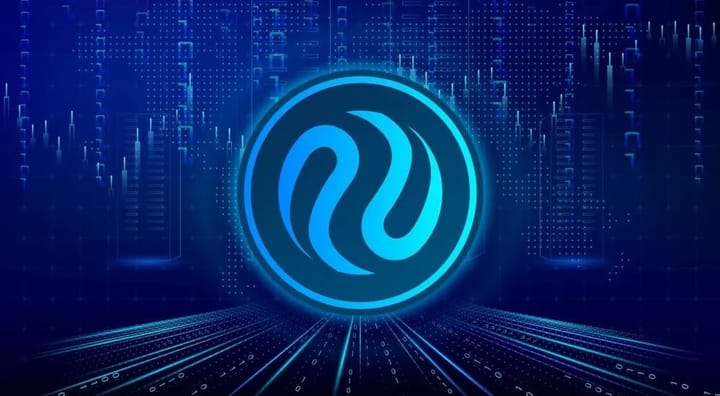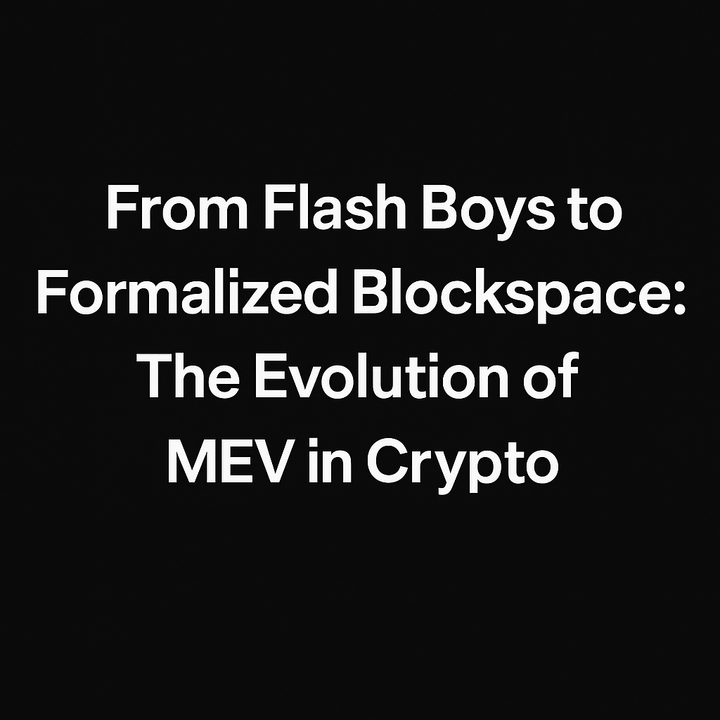The DeFi Evolution: How Mitosis App Mimics Nature to Grow Your Wealth

Introduction
Nature has always been an inspiration for innovation, from biomimicry in engineering to AI systems modeled after neural networks. Now, decentralized finance (DeFi) is taking a cue from biology with the Mitosis App—a platform designed to replicate and grow wealth much like the natural process of mitosis in living cells. But how does this work, and why should you pay attention? Let’s explore how the Mitosis App is revolutionizing DeFi by leveraging ecosystem-owned liquidity and omni-sourced yield.
The Natural Blueprint: Mitosis in Biology and Its DeFi Parallel

Mitosis, a cornerstone of cellular biology, is a highly regulated process wherein a parent cell replicates its genetic material and divides into two autonomous yet genetically identical daughter cells. This mechanism is decentralized, requiring no external oversight, and is characterized by its efficiency, scalability, and capacity for self-sustenance. Each daughter cell inherits the full potential of its predecessor, contributing to the organism’s development while retaining independent functionality.
The Mitosis Application draws a direct parallel to this biological process by treating liquidity as a dynamic, replicative asset within the DeFi framework. Traditional financial systems and even earlier DeFi iterations often confine wealth generation to linear, siloed structures—assets are deposited into isolated protocols, yielding modest, predictable returns with limited flexibility. Mitosis transcends these constraints by establishing a system wherein liquidity is not merely preserved but actively multiplied and diversified across interoperable blockchain networks. This conceptual alignment with mitosis positions the application as a transformative force in decentralized wealth management.
Operational Framework: The Mechanics of the Mitosis
The Mitosis Application operates through an intricate yet accessible framework centered on its Ecosystem-Owned Liquidity (EOL) model. Below is a detailed breakdown of its core components:
- Asset Deposition and miAsset Issuance: Users contribute assets—such as Ethereum (ETH), USD Coin (USDC), or other supported cryptocurrencies—into Mitosis Vaults. These vaults are smart contract-based repositories deployed across multiple blockchain networks, including Ethereum, layer-2 solutions like Arbitrum, and other interoperable chains. Upon deposition, users receive miAssets (e.g., miETH for ETH, miUSDC for USDC), which are tokenized representations of their contributions. These miAssets maintain a 1:1 peg to the underlying assets while embedding additional utility, functioning as yield-bearing instruments with multifaceted applications within the ecosystem.
- Programmable Liquidity Mechanisms: The miAssets serve as the functional equivalent of cellular DNA, encoding programmable capabilities that extend beyond static value representation. Holders can deploy miAssets in various capacities—staking them within vaults for passive income, trading them on integrated decentralized exchanges (DEXs), lending them via compatible protocols, or utilizing them as collateral in other DeFi applications—all without relinquishing ownership of the original deposit. This multi-dimensional utility ensures that liquidity remains fluid and adaptable, akin to the circulatory system of a living organism.
- Cross-Chain Interoperability: Leveraging advanced interoperability protocols—such as Chainlink’s Cross-Chain Interoperability Protocol (CCIP) or LayerZero—Mitosis Vaults span multiple blockchain ecosystems. This enables miAssets to operate seamlessly across disparate networks, enhancing their scalability and utility. For instance, a user depositing ETH on Ethereum might receive miETH, which can then be utilized to farm yields on Optimism or provide liquidity on Polygon, all while preserving the underlying asset’s integrity.
EOL mirrors mitosis by replicating the utility of deposited assets into multiple functional forms, fostering a decentralized financial organism that grows through collective participation.
Matrix: Curated Liquidity Campaigns and Advanced Engineering

Complementing EOL, Matrix introduces a sophisticated layer of liquidity curation and financial engineering. Described in Mitosis’s litepaper as "Curated Liquidity Campaigns," Matrix builds upon the pooled liquidity of EOL, enabling dynamic recombination and optimization across networks. Its key features include:
- Liquidity Recombination: Matrix allows liquidity to be programmatically restructured and rebalanced across blockchains based on real-time market conditions. For instance, if a yield opportunity emerges on Binance Smart Chain, Matrix can redirect idle liquidity from Ethereum vaults to capitalize on it, optimizing capital efficiency without user intervention.
- Cross-Chain Asset Representation: Matrix introduces maAssets—liquid representations of staked or locked assets that enhance cross-chain interoperability. Unlike miAssets, which are tied to specific vault deposits, maAssets serve as universal tokens that aggregate and abstract liquidity across the Mitosis ecosystem, enabling seamless asset movement and reducing fragmentation.
- Automated Optimization: Powered by advanced algorithms, Matrix automatically identifies and allocates liquidity to high-performing protocols, balancing risk and reward. This mirrors the biological process of cellular adaptation, where resources are directed to areas of greatest need or opportunity within an organism.
- Scalable Financial Engineering: Matrix empowers developers to build complex DeFi strategies atop its liquidity pools. For example, a developer might create a dApp that leverages Matrix’s recombined liquidity for arbitrage, flash loans, or multi-chain yield farming, expanding the ecosystem’s utility and attracting further participation.
Matrix enhances the mitotic analogy by enabling liquidity to not only divide but also recombine and evolve, creating a self-regulating system that adapts to the DeFi landscape’s demands.
Collaborative Dynamics: EOL and Matrix in Symbiosis
Together, EOL and Matrix emulate the cooperative dynamics of natural ecosystems. In a forest, trees share resources via mycorrhizal networks to ensure collective resilience. Similarly, Mitosis’s frameworks foster a symbiotic relationship:
- Collective Leverage: EOL aggregates liquidity into a unified pool, granting LPs access to premium opportunities typically reserved for institutional players. Matrix then curates this liquidity, deploying it strategically to maximize returns across chains.
- Sustainability: While EOL counters the volatility of “mercenary capital” by aligning user and ecosystem incentives, Matrix ensures long-term efficiency by preventing fragmentation and optimizing resource allocation.
Technical Infrastructure: The Machinery of Mitosis
The Mitosis Application relies on a robust technical foundation to execute its dual frameworks:
- Smart Contracts: Audited, open-source contracts power vaults, miAsset/maAsset issuance, and Matrix’s rebalancing logic, ensuring security and transparency.
- Cross-Chain Bridges: Partnerships with interoperability leaders enable seamless asset movement, forming the connective tissue between ecosystems.
- Yield Optimization Algorithms: Dynamic allocation engines within Matrix mirror cellular regulation, directing liquidity to optimal opportunities with precision.
Engagement and Evolution: Fostering a Thriving Ecosystem
Mitosis engaged users through gamified mechanics, such as the “Game of MITO” testnet, where participants earned Experience Points (XP) for tasks like swapping tokens or voting in governance. This educated users and built community, mirroring nature’s reliance on interaction. As Matrix campaigns roll out, they promise to further incentivize participation by rewarding strategic liquidity provision, ensuring the ecosystem remains vibrant and adaptive. Together, these frameworks emulate the mitotic process of division and recombination, enabling liquidity to multiply, adapt, and evolve in response to the ever-shifting DeFi landscape.
The implications of Mitosis extend far beyond immediate financial returns. For seasoned liquidity providers, it unlocks institutional-grade tools—such as premium yield strategies and cross-chain interoperability—that maximize capital efficiency and diversify risk. For newcomers, it offers an accessible entry point into DeFi, with gamified engagement and intuitive mechanics that demystify complex financial concepts. This inclusivity, paired with its technical sophistication, positions Mitosis as a democratizing force, bridging the gap between expert investors and casual participants in a manner reminiscent of nature’s ability to balance complexity with universality.
Moreover, Mitosis’s emphasis on sustainability and adaptability addresses critical challenges facing DeFi today—fragmentation, inefficiency, and short-termism. By creating a cohesive, multi-chain ecosystem where liquidity flows freely yet purposefully, it lays the groundwork for a more integrated and resilient decentralized economy. The potential for developers to build atop Matrix’s liquidity pools further amplifies this impact, fostering an innovation hub where new financial instruments and strategies can flourish, much like biodiversity strengthens a natural ecosystem.
Looking ahead, the successful deployment of Mitosis’s mainnet could herald a new phase in DeFi’s evolution—one where wealth generation is not a zero-sum game but a collaborative, organic process. Its ability to mirror the elegance of biological mitosis—division for growth, recombination for strength—offers a compelling proof of concept: that the most enduring solutions often arise from emulating nature’s time-tested designs. As blockchain technology continues to mature, Mitosis stands as a beacon of what is possible when human ingenuity aligns with the principles of the natural world, delivering a scalable, inclusive, and forward-thinking platform that redefines how wealth is cultivated in the digital age.
In summary, the Mitosis Application is more than a DeFi platform; it is a living testament to the power of interdisciplinary innovation. By planting the seeds of liquidity in its fertile ecosystem, users—whether depositing their first ETH or managing a diversified portfolio—can participate in a financial revolution where assets multiply and thrive as naturally as life itself. As Mitosis takes root, it promises to not only enhance individual wealth but also cultivate a thriving, interconnected DeFi biosphere, setting a precedent for the industry’s next frontier.



Comments ()